Unlocking the Snowball Effect: A Deep Dive into VOO’s Dividend Power
Have you ever wondered how some investments seem to grow almost effortlessly over time, creating significant wealth for their owners? While market appreciation is often the star of the show, there’s a powerful, often underestimated force at play: dividends, especially when reinvested. Today, we’re going to explore the Vanguard S&P 500 ETF, known as VOO, and how its regular dividend payouts, combined with a smart strategy, can accelerate your journey toward financial strength. We’ll break down VOO’s dividend specifics, uncover the magic of compounding through reinvestment, share strategies to maximize your returns, and discuss important risks to keep in mind.
VOO is widely recognized as a cornerstone for diversified investment, passively tracking the performance of America’s largest publicly traded companies within the S&P 500 index. But VOO offers more than just broad market exposure; it’s a consistent dividend payer. This article explores VOO’s dividend mechanics, its historical payout trends, and crucially, how disciplined dividend reinvestment can transform modest investments into substantial long-term wealth, making VOO a powerful component of any financial portfolio.
VOO’s Dividend Landscape: Yields, Payouts, and Projections
Let’s begin by understanding what VOO is and how its dividends work. The Vanguard S&P 500 ETF (VOO) is an exchange-traded fund (ETF) that aims to mirror the performance of the S&P 500 index. This index includes approximately 500 of the largest U.S. companies, offering you broad investment diversification with a single purchase. VOO stands out as the largest S&P 500 ETF by assets under management, exceeding an impressive $600 billion, and boasts a remarkably low expense ratio of just 0.03%. This means very little of your money goes to fees, allowing more to stay invested and grow.
Investors often choose VOO for several compelling reasons:
- It provides instant diversification across 500 large U.S. companies.
- Its ultra-low expense ratio means more of your money stays invested.
- It offers a straightforward way to track the overall U.S. stock market performance.
VOO pays its dividends on a quarterly basis. This means you can expect a payout roughly every three months. As of recent data points (looking at June/July 2025 projections), VOO’s current dividend yield ranges from about 1.19% to 1.22%. The dividend yield is simply the annual dividend payout divided by the current share price, giving you a percentage return on your investment from dividends alone. For instance, the latest confirmed dividend per share was $1.74 for Q2 2025, with an ex-dividend date of June 30, 2025, and a pay date of July 2, 2025. The ex-dividend date is crucial: you must own the shares before this date to be eligible for the upcoming dividend payment. The pay date is when the dividend money actually hits your account.
Looking ahead, the next estimated dividend per share is approximately $1.64 for Q3 2025, with an estimated ex-dividend date of September 29, 2025, and a pay date of October 1, 2025. Another upcoming estimated dividend for Q2 2025 was $1.745, with an ex-date of June 3, 2025, and pay date of July 2, 2025. These figures demonstrate that VOO’s annual dividend is projected to be around $6.93, based on recent payouts. It’s important to remember that while these are estimates and confirmed amounts, dividend payments can vary slightly based on the performance of the underlying companies in the S&P 500. We’ve summarized some key upcoming dates and amounts for clarity:
- Latest Confirmed Dividend: $1.74 per share (Q2 2025)
- Ex-Dividend Date (Latest): June 30, 2025
- Pay Date (Latest): July 2, 2025
- Next Estimated Dividend: $1.64 per share (Q3 2025)
- Estimated Ex-Dividend Date (Next): September 29, 2025
- Estimated Pay Date (Next): October 1, 2025
For a clearer overview, here are the recent and estimated dividend details:
| Dividend Period | Dividend per Share | Ex-Dividend Date | Pay Date |
|---|---|---|---|
| Q2 2025 (Confirmed) | $1.74 | June 30, 2025 | July 2, 2025 |
| Q3 2025 (Estimated) | $1.64 | September 29, 2025 | October 1, 2025 |
| Q2 2025 (Another Estimated) | $1.745 | June 3, 2025 | July 2, 2025 |
The Compounding Magic: Why Reinvesting VOO Dividends Matters
Now that we understand VOO’s dividend schedule, let’s talk about how to make those payments work harder for you. This is where the concept of dividend reinvestment comes into play, creating what many call the “snowball effect.” A Dividend Reinvestment Plan (DRIP) allows you to automatically use your dividend payouts to buy more shares of VOO, rather than receiving the cash. This might seem like a small detail, but its impact over time is truly profound.
Imagine you receive a dividend payment. Instead of taking that cash out, your brokerage automatically uses it to purchase additional fractional or full shares of VOO. These new shares then earn their own dividends, which in turn buy even more shares. This continuous cycle of dividends earning more dividends is known as compounding, and it’s one of the most powerful forces in investing. It creates exponential growth, meaning your wealth grows not just linearly, but at an accelerating pace. It’s like planting a tree that then grows more trees, which then grow even more trees – the growth multiplies over time.
Implementing a Dividend Reinvestment Plan (DRIP) for your VOO investment brings significant advantages:
- It automates the process of buying more shares, ensuring consistent investment.
- It leverages compounding by allowing dividends to earn more dividends.
- It reduces the need for manual transactions and potential trading fees on small amounts.
Let’s look at a concrete example to illustrate this power. According to analysis, a hypothetical $10,000 investment in VOO with dividend reinvestment could grow to over $14,500 by 2030. This represents a significant boost – approximately 40% more growth compared to an identical investment where dividends were not reinvested and simply taken as cash. This isn’t just theory; VOO’s dividends have historically contributed a substantial portion to the overall returns of the S&P 500. Since 1926, the S&P 500’s average annual returns have been 7-8%, and VOO’s dividends have historically accounted for about 40% of that total return. This clearly shows that ignoring dividends means leaving a significant portion of potential growth on the table.
To further visualize the power of compounding with VOO, consider this simplified illustration of how reinvestment contributes to growth over time:
| Year | Initial Investment | Annual Dividend Payout (Est.) | Shares Purchased (Est.) | Total Investment Value (Est.) |
|---|---|---|---|---|
| Year 1 | $10,000 | $120 | 0.25 shares | $10,120 |
| Year 2 | $10,120 | $121.44 | 0.25 shares | $10,241.44 |
| Year 3 | $10,241.44 | $122.90 | 0.25 shares | $10,364.34 |
Note: This table is a simplified example and does not account for share price fluctuations, exact dividend yields, or specific growth rates, but demonstrates the principle of reinvestment.
The beauty of a DRIP with VOO is that it’s a “set it and forget it” strategy. Once you set up dividend reinvestment with your brokerage, it happens automatically. You don’t need to manually invest small amounts of cash, which can be cumbersome. This consistent, automatic reinvestment is crucial for maximizing returns and truly harnessing the power of compounding for your long-term wealth accumulation.
Historical Dividend Performance and Growth Trends
Understanding past performance can give us valuable insights into what to expect, though it’s never a guarantee of future results. VOO has a strong track record of not just paying dividends, but also growing them over time. While the exact growth rates can vary slightly depending on the reporting source and the specific calculation method, the trend is generally positive. For example, one source indicates VOO’s dividend growth rates as follows:
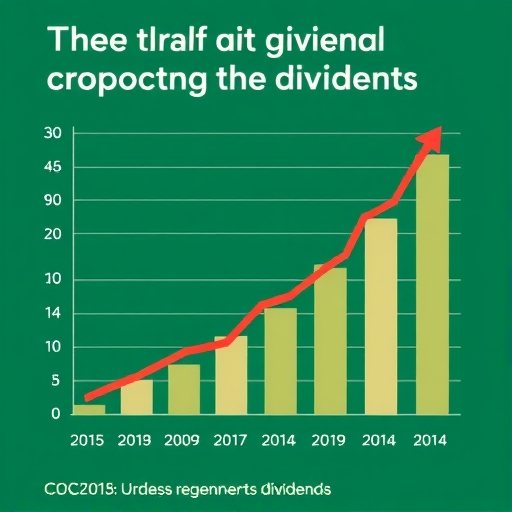
- 10-Year Growth: 5.84%
- 5-Year Growth: 5.51%
- 3-Year Growth: 5.25%
- 1-Year Growth: 3.44%
Another reliable source (stockinvest.us) might show slightly different figures, such as 0% for 1-year growth, 3.94% for 3-year growth, and 5.55% for 5-year growth. These minor discrepancies often come from different start and end points for calculation, or how specific quarterly payments are weighted. What’s consistently clear, however, is that VOO’s dividends have shown a healthy upward trend over medium to long-term periods. This growth reflects the underlying strength and profitability of the major U.S. companies within the S&P 500 that VOO holds.
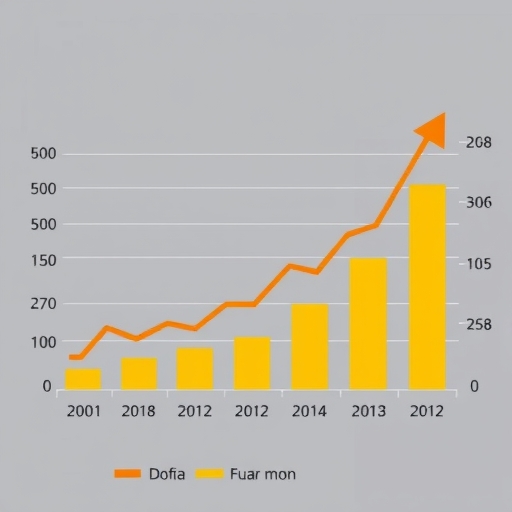
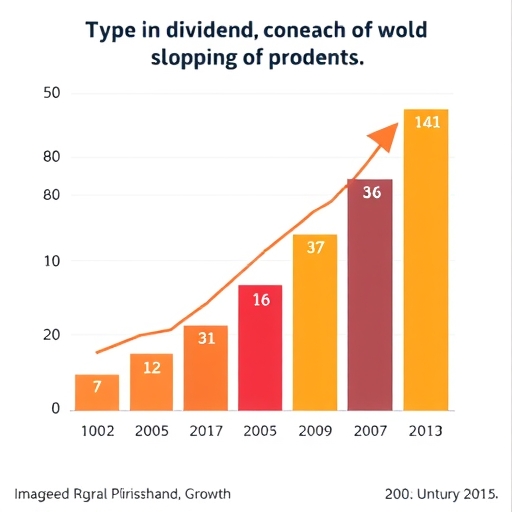
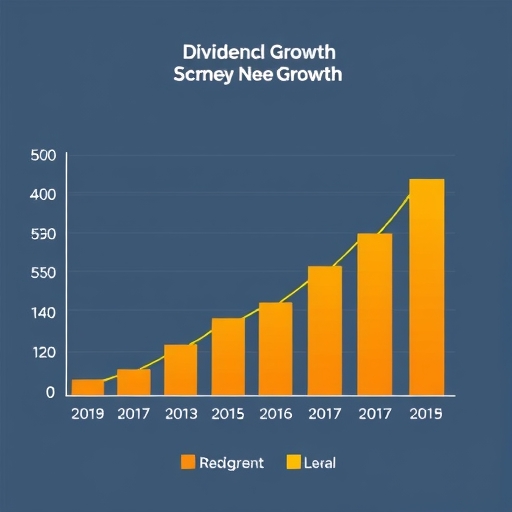
Looking at historical dividend amounts also reveals this consistency. Payouts have varied from quarter to quarter, for instance: $1.74 (July 2025/December 2024), $1.81 (March 2025), $1.64 (October 2024), $1.78 (July 2024), and $1.54 (March 2024). These fluctuations are normal, reflecting the collective earnings and financial decisions of the hundreds of companies in the S&P 500. The key takeaway is the consistent stream of payments and the general upward trajectory of the annual payout over decades, providing a reliable income component to your investment returns.
Different sources may report slightly varying historical dividend growth rates due to calculation methodologies or specific timeframes. Here’s a comparison:
| Period | Source 1 Growth Rate | Stockinvest.us Growth Rate |
|---|---|---|
| 10-Year | 5.84% | N/A |
| 5-Year | 5.51% | 5.55% |
| 3-Year | 5.25% | 3.94% |
| 1-Year | 3.44% | 0.00% |
These variations highlight the importance of understanding the data source and calculation methods when evaluating historical performance.
Maximizing Your VOO Returns: Strategic Investment Approaches
Beyond simply buying VOO and setting up a DRIP, are there other ways to optimize your investment and potentially enhance your returns? Absolutely. While VOO is largely a “buy and hold” investment, a few strategic considerations can help you make the most of it. The most crucial strategy, as we’ve emphasized, is consistent dividend reinvestment. By keeping your money working for you, you ensure that compounding continues its powerful work.
To optimize your VOO investment, consider these strategic approaches:
- Prioritize consistent dividend reinvestment to amplify compounding effects.
- Adopt a dollar-cost averaging strategy for regular investments, reducing market timing risk.
- Maintain a long-term holding period to benefit from market resilience and growth cycles.
Another point to consider is the timing of your purchases around ex-dividend dates. As we discussed, you need to own VOO shares before the ex-dividend date to receive the upcoming dividend payment. Some investors might choose to buy shares just before this date to qualify for the immediate payout. However, it’s important to understand that the share price typically adjusts downward by roughly the dividend amount on the ex-dividend date. So, while you get the dividend, the immediate value of your shares might decrease. For long-term investors, trying to “time” these small movements is generally less effective than consistent, dollar-cost averaging, where you invest a fixed amount regularly regardless of price.
It’s also helpful to understand what drives VOO’s distributions. VOO’s dividends are funded by the dividends paid by the companies it holds. Naturally, its top holdings, which include giants like Apple (AAPL), Microsoft (MSFT), and Amazon (AMZN), are significant contributors to VOO’s distributions. These are some of the largest and most profitable companies in the world, and many of them consistently pay and grow their dividends. However, it’s worth noting that VOO also holds some major tech companies like Netflix (NFLX) and Tesla (TSLA) which historically have not paid dividends, or only started recently. This mix means VOO’s overall dividend yield will reflect both dividend-paying and non-dividend-paying components of the S&P 500. This is why VOO’s yield is moderate compared to specialized high-dividend funds.
Finally, the overarching strategy for VOO, and indeed for most index fund investments, is long-term holding. The S&P 500, and by extension VOO, has a proven track record of recovering from market downturns and achieving significant growth over decades. Trying to time the market by buying and selling frequently often leads to missing out on the best performing days. By holding VOO for the long term, you allow market volatility to smooth out and give the power of compounding ample time to work its magic. This approach helps you ride out market cycles and capitalize on the resilience of the U.S. economy.
Navigating the Waters: Risks and Considerations for VOO Dividend Investors
While VOO offers compelling benefits for long-term investors, it’s equally important to understand the potential risks and considerations. No investment is entirely without risk, and VOO is no exception. Being aware of these factors helps you make informed decisions and build a more resilient portfolio.
Firstly, while dividends provide a steady income stream, they do not fully protect against bear markets or significant market downturns. If the overall stock market experiences a sharp decline, the value of your VOO shares will also fall, even if dividends continue to be paid. While the dividends themselves can help cushion some of the impact by buying more shares at lower prices during a downturn, the primary risk remains market volatility. The S&P 500 is a broad market index, meaning it reflects the overall health of the U.S. economy, and therefore, it is susceptible to economic cycles.
Secondly, there’s a potential for dividend cuts. While VOO holds many large, stable blue-chip companies, and dividend cuts are relatively rare for such established firms, they can happen. If a significant number of companies within the S&P 500 reduce or suspend their dividends due to financial distress or economic headwinds, VOO’s overall dividend payout would decrease. This is a less common risk for a diversified fund like VOO compared to investing in individual stocks, but it’s not impossible.
Thirdly, VOO’s dividend yield might not always keep pace with high inflation rates. If inflation rises significantly, the purchasing power of your dividend income could erode. While the S&P 500 companies often have pricing power to pass on increased costs, and dividend growth can help, very high inflation could still outpace your dividend income growth. This highlights the importance of total return (price appreciation plus dividends) rather than just focusing on yield.
Finally, it’s worth reiterating that VOO is not primarily designed as a high-dividend ETF. Its main goal is to track the S&P 500, which includes both dividend-paying and non-dividend-paying companies. Therefore, VOO’s yield, typically around 1.19% to 1.22%, might be lower than specialized high-dividend ETFs. For instance, the Invesco S&P Ultra Dividend Revenue ETF (RDIV) is specifically designed to focus on companies with higher dividend yields and might offer a significantly higher payout. VOO’s dividend yield, currently around 0.275% (TTM from some sources), is higher than the bottom 25% of US market dividend payers (0.251%) but considerably lower than the top 25% in sectors like Financial Services (7.47%). If your primary goal is maximizing current income from dividends, you might consider diversifying with some high-quality dividend growers or specialized dividend funds in addition to VOO. Companies like Coca-Cola (KO) and Johnson & Johnson (JNJ) are examples of “Dividend Aristocrats” or “Dividend Kings” — companies with long histories of consistent dividend increases — that could complement a VOO position for enhanced dividend focus.
Conclusion
The Vanguard S&P 500 ETF (VOO) stands out as a robust vehicle for long-term wealth creation, not merely through market appreciation but significantly through its consistent dividend payouts. We’ve explored how VOO tracks the S&P 500, offering broad diversification and a remarkably low expense ratio. We delved into its quarterly dividend mechanics, providing details on current yields, recent payouts, and upcoming ex-dividend and pay dates. Most importantly, we’ve uncovered the profound impact of dividend reinvestment plans (DRIPs), demonstrating how this “snowball effect” can exponentially accelerate your investment growth through the power of compounding, turning modest sums into substantial long-term wealth.
By consistently reinvesting your VOO dividends, understanding the timing around ex-dividend dates, and committing to a long-term holding strategy, you can effectively tap into the engine of the American economy. While VOO offers immense benefits, we also discussed the importance of being aware of risks such as market downturns, potential (though rare) dividend cuts, and the impact of inflation on yield, encouraging a balanced portfolio approach. For those seeking a powerful yet straightforward way to build wealth over decades, VOO with a disciplined dividend reinvestment strategy remains a formidable choice.
Disclaimer: This article is for informational and educational purposes only and does not constitute financial advice. Investing in exchange-traded funds (ETFs) and the stock market involves risks, including the potential loss of principal. Always consult with a qualified financial professional before making any investment decisions. Dividend payments are not guaranteed and can fluctuate.
Frequently Asked Questions (FAQ)
Q: What is a dividend reinvestment plan (DRIP) and why is it important for VOO investors?
A: A DRIP allows you to automatically use your VOO dividend payouts to purchase more shares of VOO. This is crucial because it enables compounding, meaning your dividends earn more dividends, accelerating your wealth growth over time without requiring manual intervention.
Q: How often does VOO pay dividends, and how is the dividend yield calculated?
A: VOO pays dividends on a quarterly basis, approximately every three months. The dividend yield is calculated by dividing the total annual dividend payout per share by the current share price, expressed as a percentage. For example, if VOO pays $6.93 annually and its share price is $400, the yield would be 1.73%.
Q: What are the main risks associated with investing in VOO for its dividends?
A: While VOO is broadly diversified, its value is still subject to overall market volatility and potential downturns. Although rare for a fund of this nature, there’s always a possibility of dividend cuts by the underlying companies, which would reduce VOO’s payout. Additionally, high inflation could erode the purchasing power of your dividend income if dividend growth doesn’t keep pace.


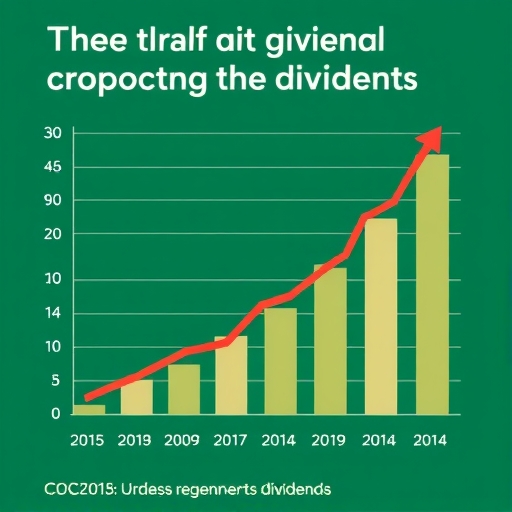
No responses yet